GM1 CAT.POL.H.310 & CAT.POL.H.325 Take-off and landing
CAA ORS9 Decision No. 1
TAKE-OFF AND LANDING TECHNIQUES
(a) This GM describes three types of operation to/from helidecks and elevated FATOs by helicopters operating in performance class 2.
(b) In two cases of take-off and landing, exposure time is used. During the exposure time (which is only approved for use when complying with CAT.POL.H.305), the probability of an engine failure is regarded as extremely remote. If an engine failure occurs during the exposure time, a safe forced landing may not be possible.
(c) Take-off — non-hostile environment (without an approval to operate with an exposure time) CAT.POL.H.310(b).
(1) Figure 1 shows a typical take-off profile for performance class 2 operations from a helideck or an elevated FATO in a non-hostile environment.
(2) If an engine failure occurs during the climb to the rotation point, compliance with CAT.POL.H.310(b) will enable a safe landing or a safe forced landing on the deck.
(3) If an engine failure occurs between the rotation point and the DPATO, compliance with CAT.POL.H.310(b) will enable a safe forced landing on the surface, clearing the deck edge.
(4) At or after the DPATO, the OEI flight path should clear all obstacles by the margins specified in CAT.POL.H.315.
Figure 1
Typical take-off profile PC2 from a helideck/elevated FATO, non-hostile environment
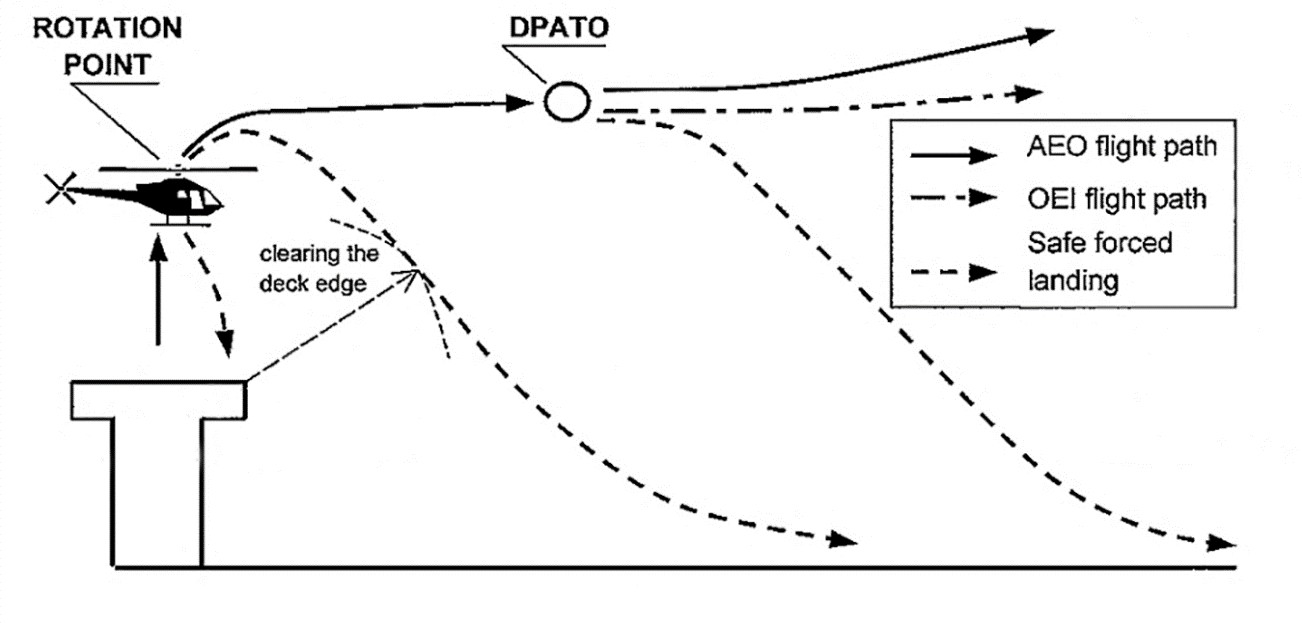
(d) Take-off — non-hostile environment (with exposure time) CAT.POL.H.310(c)
(1) Figure 2 shows a typical take-off profile for performance class 2 operations from a helideck or an elevated FATO in a non-hostile environment (with exposure time).
(2) If an engine failure occurs after the exposure time and before DPATO, compliance with CAT.POL.H.310(c) will enable a safe forced landing on the surface.
(3) At or after the DPATO, the OEI flight path should clear all obstacles by the margins specified in CAT.POL.H.315.
Figure 2
Typical take-off profile PC2 from a helideck/elevated FATO with exposure time, non-hostile environment
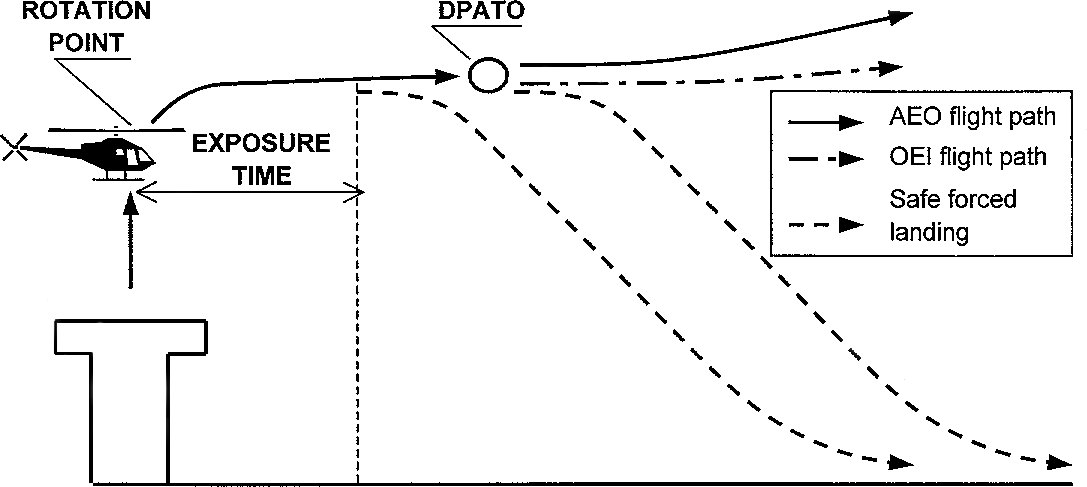
(e) Take-off — non-congested hostile environment (with exposure time) CAT.POL.H.310(c)
(1) Figure 3 shows a typical take off profile for performance class 2 operations from a helideck or an elevated FATO in a non-congested hostile environment (with exposure time).
(2) If an engine failure occurs after the exposure time, the helicopter is capable of a safe forced landing or safe continuation of the flight.
(3) At or after the DPATO, the OEI flight path should clear all obstacles by the margins specified in CAT.POL.H.315.
Figure 3
Typical take-off profile PC2 from a helideck/elevated FATO, non-congested hostile environment
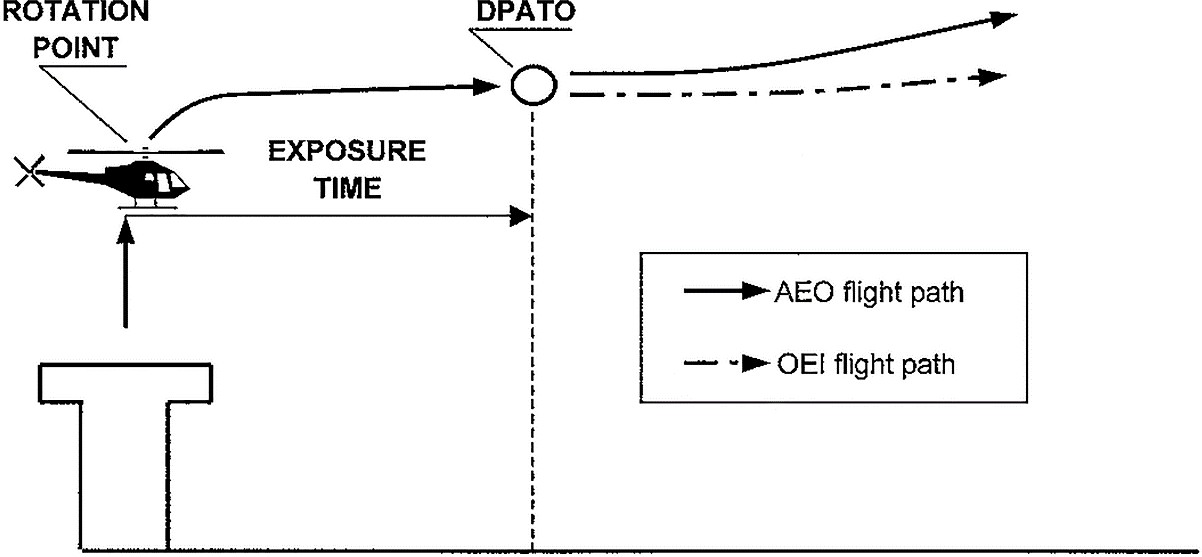
(f) Landing — non-hostile environment (without an approval to operate with an exposure time) CAT.POL.H.325(b)
(1) Figure 4 shows a typical landing profile for performance class 2 operations to a helideck or an elevated FATO in a non-hostile environment.
(2) The DPBL is defined as a ‘window’ in terms of airspeed, rate of descent, and height above the landing surface. If an engine failure occurs before the DPBL, the pilot may elect to land or to execute a balked landing.
(3) In the event of an engine failure being recognised after the DPBL and before the committal point, compliance with CAT.POL.H.325(b) will enable a safe forced landing on the surface.
(4) In the event of an engine failure at or after the committal point, compliance with CAT.POL.H.325(b) will enable a safe forced landing on the deck.
Figure 4
Typical landing profile PC2 to a helideck/elevated FATO, non-hostile environment
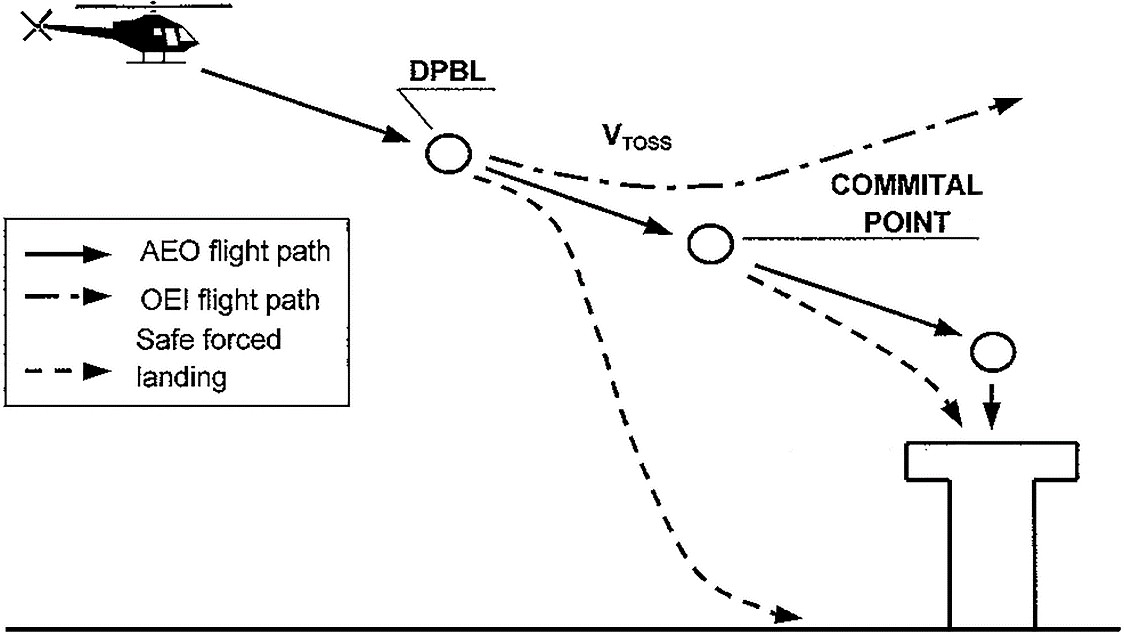
(g) Landing — non-hostile environment (with exposure time) CAT.POL.H.325(c)
(1) Figure 5 shows a typical landing profile for performance class 2 operations to a helideck or an elevated FATO in a non-hostile environment (with exposure time).
(2) The DPBL is defined as a ‘window’ in terms of airspeed, rate of descent, and height above the landing surface. If an engine failure occurs before the DPBL, the pilot may elect to land or to execute a balked landing.
(3) In the event of an engine failure being recognised before the exposure time, compliance with CAT.POL.H.325(c) will enable a safe forced landing on the surface.
(4) In the event of an engine failure after the exposure time, compliance with CAT.POL.H.325(c) will enable a safe forced landing on the deck.
Figure 5
Typical landing profile PC2 to a helideck/elevated FATO with exposure time, non-hostile environment
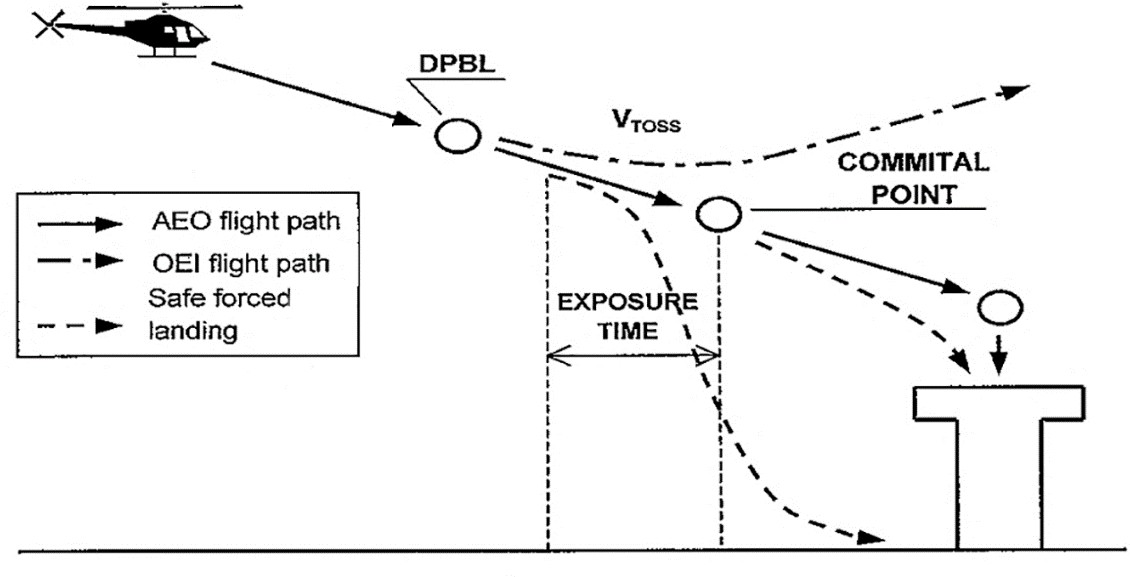
(h) Landing — non-congested hostile environment (with exposure time) CAT.POL.H.325(c)
(1) Figure 6 shows a typical landing profile for performance class 2 operations to a helideck or an elevated FATO in a non-congested hostile environment (with exposure time).
(2) In the event of an engine failure at any point during the approach and landing phase up to the start of exposure time, compliance with CAT.POL.H.325(b) will enable the helicopter, after clearing all obstacles under the flight path, to continue the flight.
(3) In the event of an engine failure after the exposure time (i.e. at or after the committal point), a safe forced landing should be possible on the deck.
Figure 6
Typical landing profile PC2 to a helideck/elevated FATO with exposure time, non-congested hostile environment
